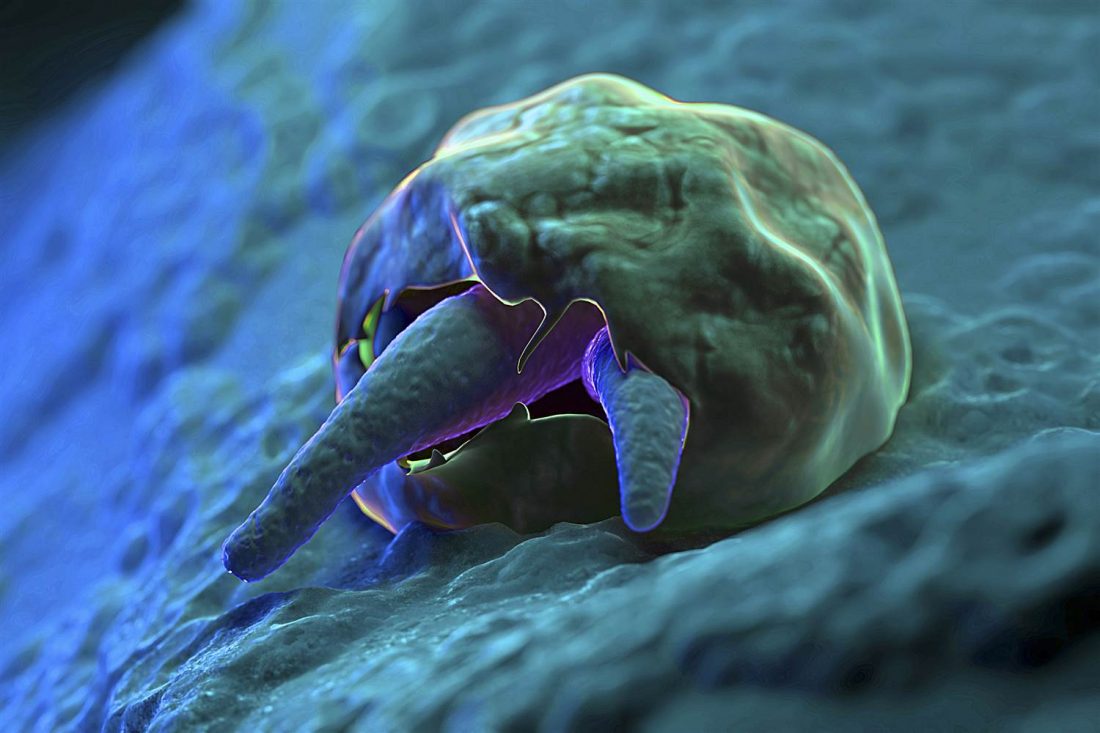Water treatment is a science; water-borne viruses, parasites, etc. evolve, and become resistant, the same way air-borne ones do, so routine testing of water quality is paramount to ensure current treatment measures are working. It is acknowledged that the parasite Cryptosporidium parvum is one of the most resistant parasites to chemical forms of water treatment. Fortunately, because the Cryptosporidium oocysts range in size between four and seven microns, barrier filtration techniques such as ultrafiltration or nanofiltration offer a proven method of removal. For instance, ultrafiltration (UF) will remove 99.95% of all particles between three and four microns, and is now considered to be the standard approach for Cryptosporidium removal.
Reverse osmosis membranes, although not strictly behaving as a barrier filter in the way of
UF, are considered to have pores of the order of at least ten times smaller – sufficient to remove more than 99.5% of even dissolved species, as well as 100% of particulates. It has even greater removal effect on Cryptosporidium than UF, probably due to the pore size being less 0.2 microns. Unfortunately, this process is more wasteful in energy and water. Consequently, although effective, it is rarely utilised as a main line approach.
Besides monitoring and treatment, a further and equally important key stage in a programme designed to prevent Cryptosporidiosis is the protection of water systems from possible contamination. It is well known that Cryptosporidium can be transmitted through the faecal-oral route, like many other enteric pathogens, and so this needs to be prevented. For instance, a relationship between heavy rainfall and high concentrations of Cryptosporidium in source water has been noted in several studies along with sewer overflows and snowmelt. Other causes include farming practices, accidental spills, and poor water quantity management practices. Most of these events may be predictable, and, therefore, the correct risk management could reduce contamination incidents.
Within the EU, water providers are obliged to provide consumers with ‘wholesome’ water that meets rigorous compliance legislation, and they clearly take this obligation seriously, resulting in the UK probably having one of the safest supplies in the world. Also, a raft of regulations is in place for the management of water systems in buildings to ensure cleanliness, for instance with regards to Legionellosis. There is no reason certain measures cannot be taken by the buildings management and construction industry to ensure that properties are equipped with systems that will protect against further contamination of the water supply. The techniques and products are both proven and available, and are already in use in countries where the water supplies are less reliable and in sectors where assurance that harmful pathogens are absent is essential, such as pharmaceuticals, healthcare, catering, and food and beverage production, as well as potable water.
There are also other microbiological species out there which can be troublesome – some may be in the water supplies, others may develop within water systems in buildings. Unfortunately, some bacteria that exist only intermittently or at barely perceptible levels in supplies, can flourish in systems within the built environment. Mycobacteria and Pseudomonas, for instance, whose potential harm is well understood, are of a particular concern for people who may already be undergoing medical treatment, or who have immunity related issues. This may be especially relevant when water systems are poorly maintained.
In summary, the management of the microbiological aspects of water supplies, whether outside or within a building is a complex matter, and is, in general, properly regulated and managed well. From time to time, however, situations may arise where consumers, or even building occupiers, may be at risk. Fortunately, there are proven procedures and devices available to protect consumers from contamination by pathogens like Cryptosporidium. The water treatment and supply industry can monitor and test supplies, as well as advise and assist with the management of water systems wherever they are, to reduce risk and give peace of mind.


